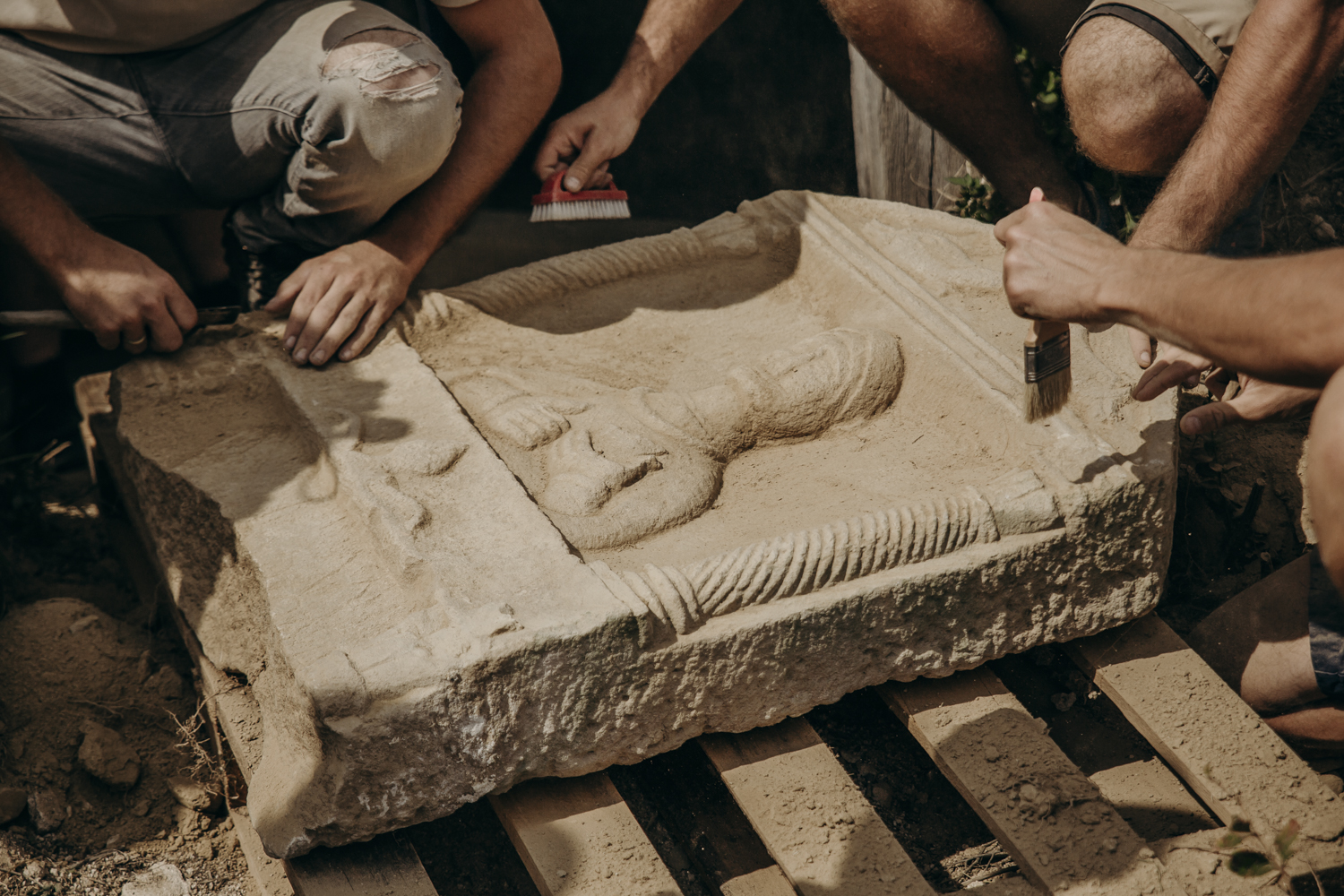A magical reunion has just taken place in the garden of a church in Kékkút, near Veszprém. A half-tombstone found in a ruined wine-press house in Dörgicse was brought together with another half that had been discovered at the threshold of a church a few kilometres away. Experts had to dig further to find the truth behind this mystery.
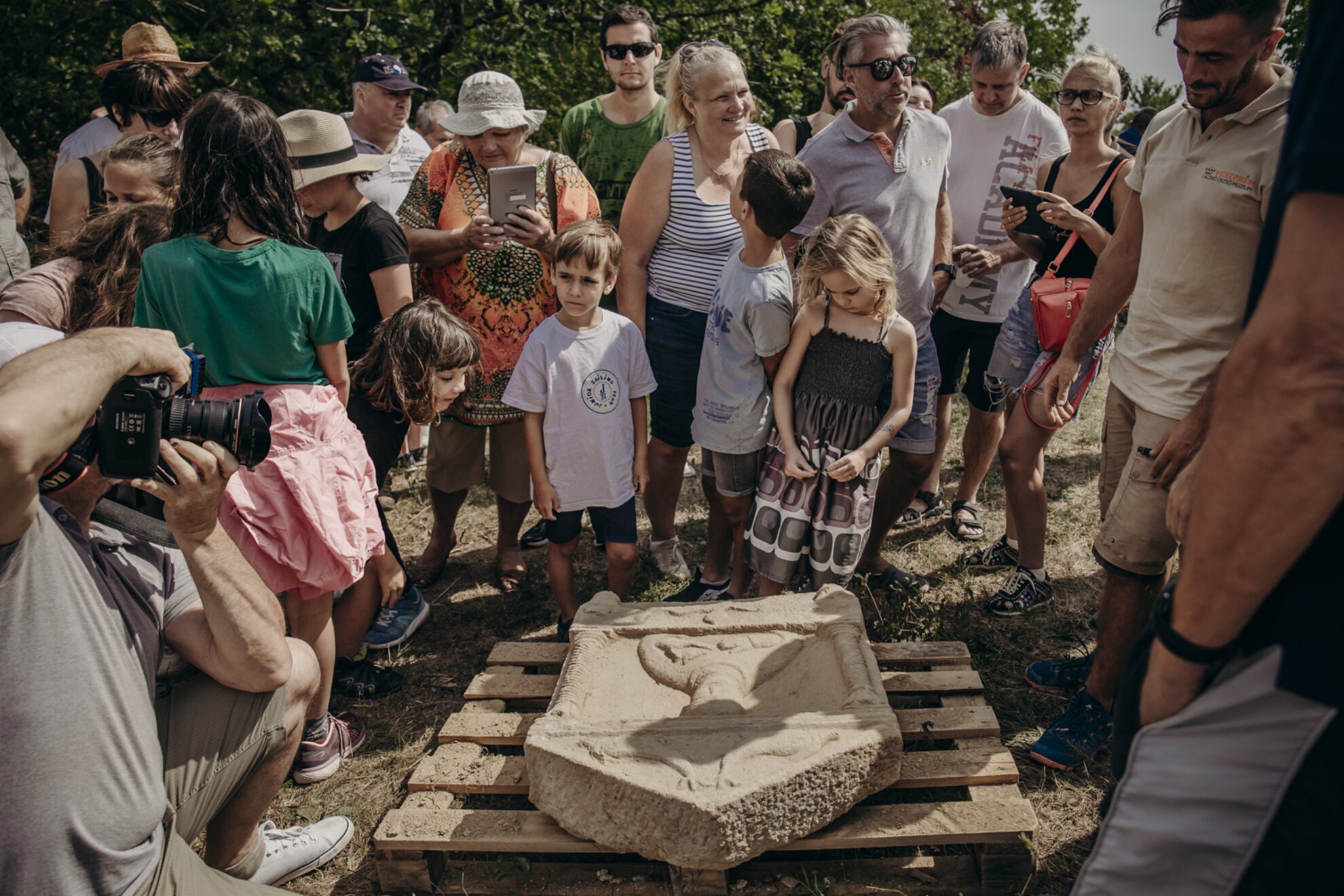
Time flies, especially for archaeologists who think in thousands of years. It was only earlier this summer when onlookers were gripped as a late Roman tombstone was excavated in a vineyard in Dörgicse. It was magical to see such strenuous work in a 200-year-old wine-press house uncover a carving from 2,000 years ago – used, until then, as a bridging element. Spectators felt honoured to see how delicate hands used brushes and water for the stone, upon which was the image of a woman in a turban holding a glass in her hand, and a few letters. However, it was obvious then that a significant piece to make up the entire tombstone lay somewhere else.
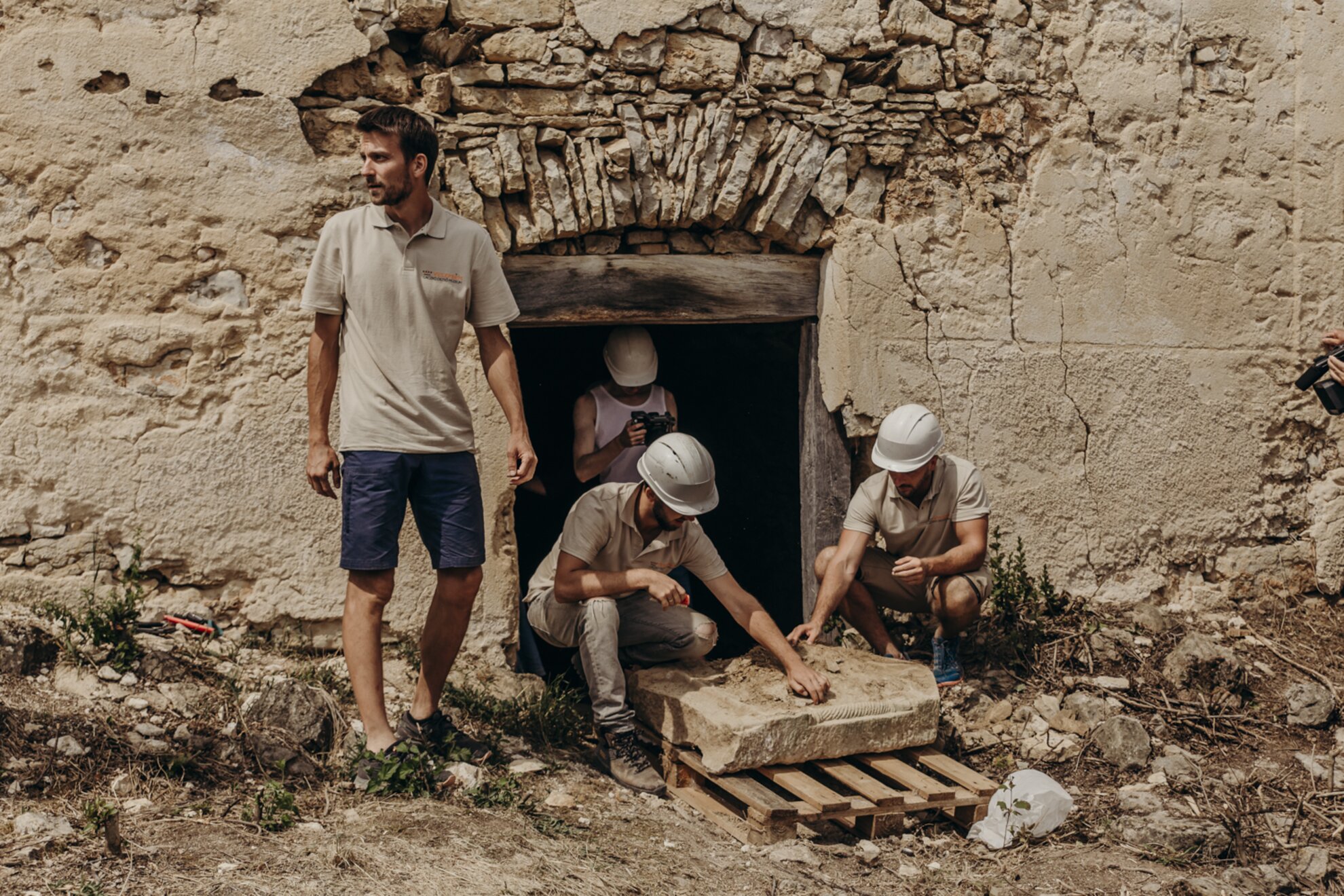
Finding the other half was like looking for a needle in a haystack, as it could have been anywhere in the Balaton Uplands or even further, long since been crumbled to dust or lying underground in the depths of the forest. Seek and ye shall find. The experts at the Laczkó Dezső Museum in Veszprém, charged with the responsibility of exploration and research on this project, browsed through catalogues of Roman tombstones and found a piece in the huge collection in the Balaton Museum in Keszthely, not unlike the Dörgicse piece. So they compared the two – and eureka!
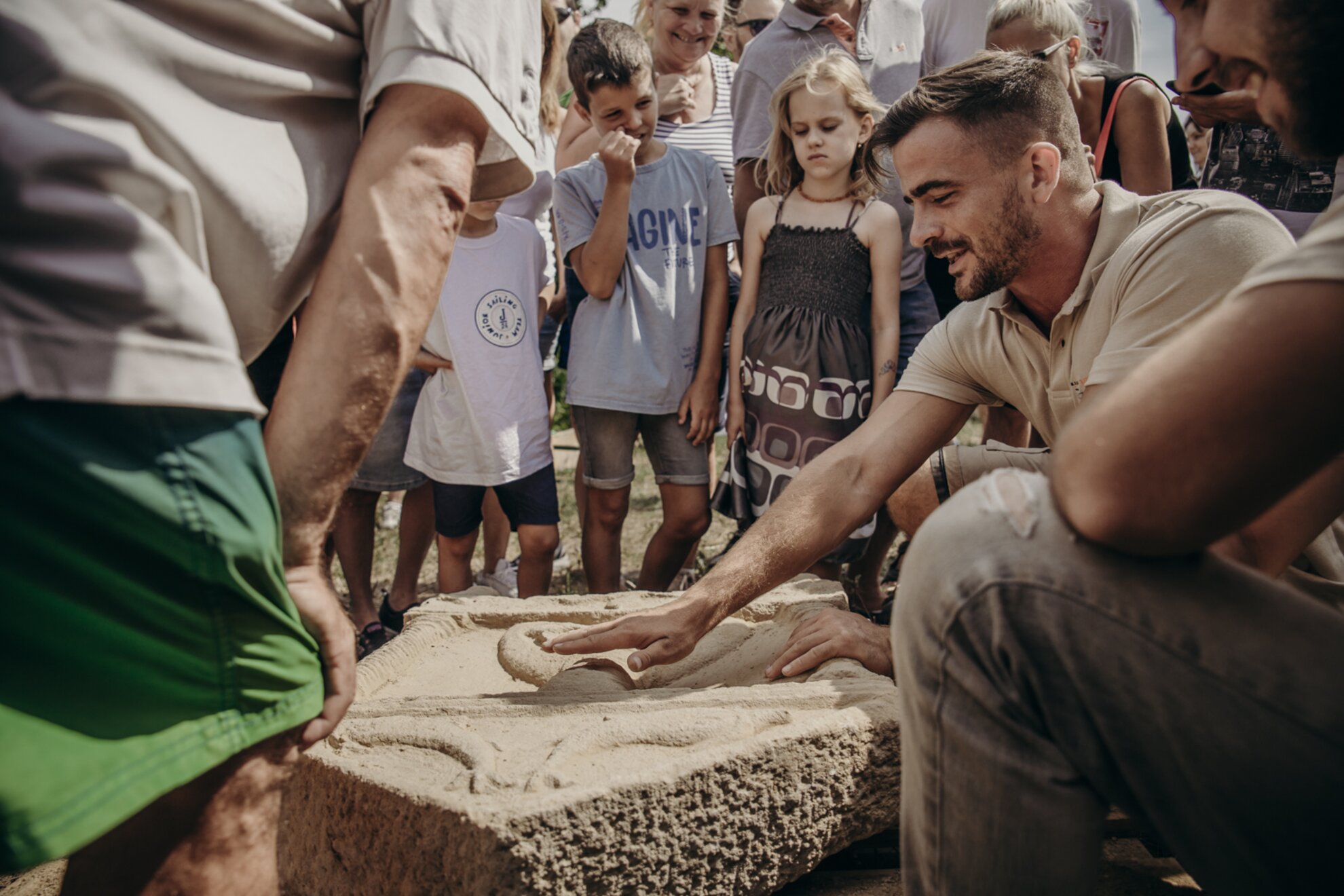
It was such as significant moment that within the framework of one of the last cultural festivals of the summer, Kőfeszt in Kékkút, an hour before a classical music concert, the story of the stone unification was related and, of course, the work was unveiled. A carpenter at the Laczkó Museum made a beautiful wooden stand with precise hands, for which the two pieces of sandstone were placed one below the other. In the church garden, two employees of the museum, ethnographer Balázs Törő and archaeologist Zsombor Győrffy-Villám, gave the countdown from ten as the crowd joined in.
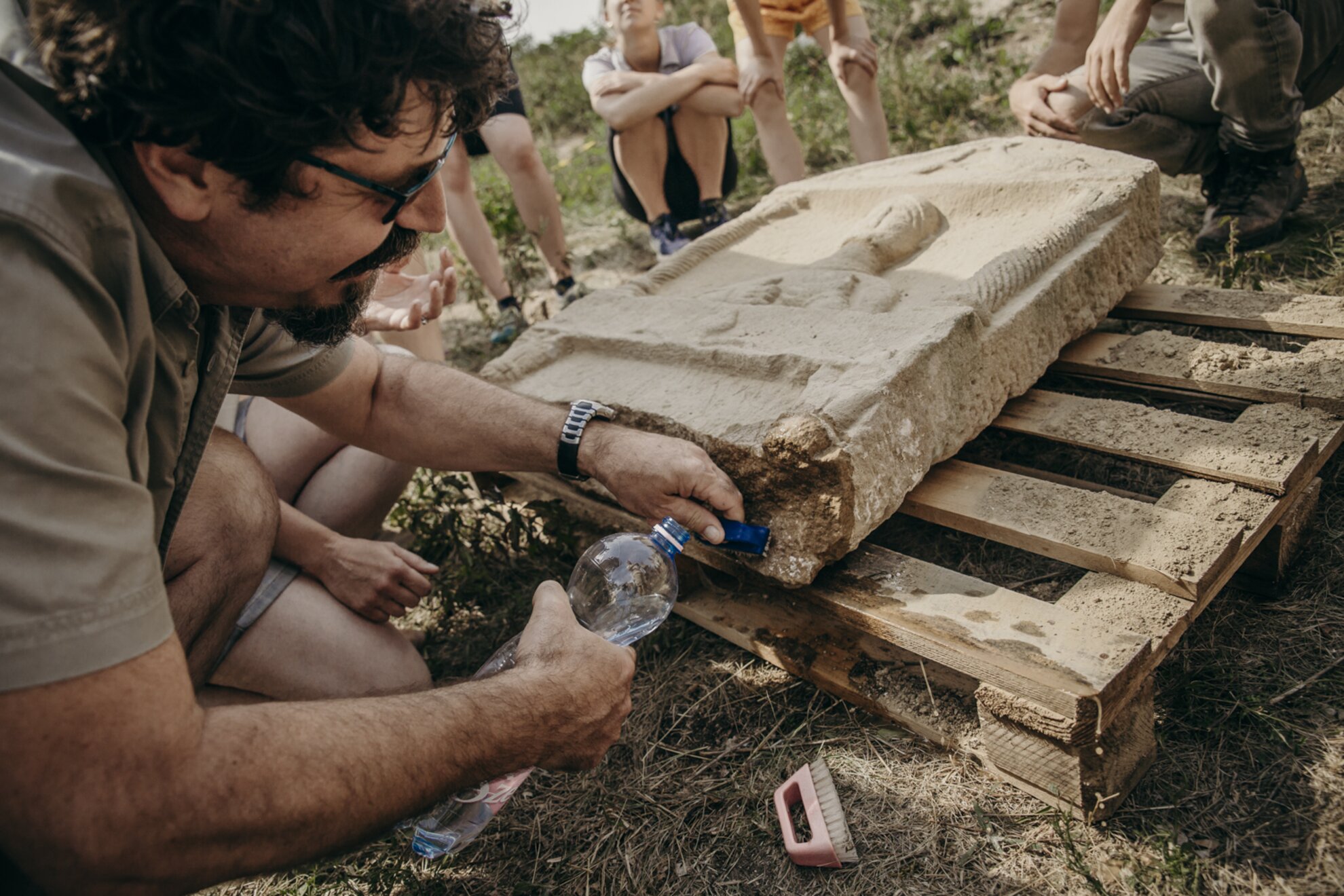
Afterwards, the experts talked about its history before a Q&A with the audience. Törő had found the first stone a long time ago, painstakingly looking into every ruined cellar and wine-press house – he’s also an avid researcher of wine culture. He immediately noticed that one of the elements in the limestone edifice was a lightly carved piece of sandstone. Locals the cleared away bushes, rolled away stones and arranged the terrain, in a somewhat basic manner, before archaeological methods were then tried under supervision.
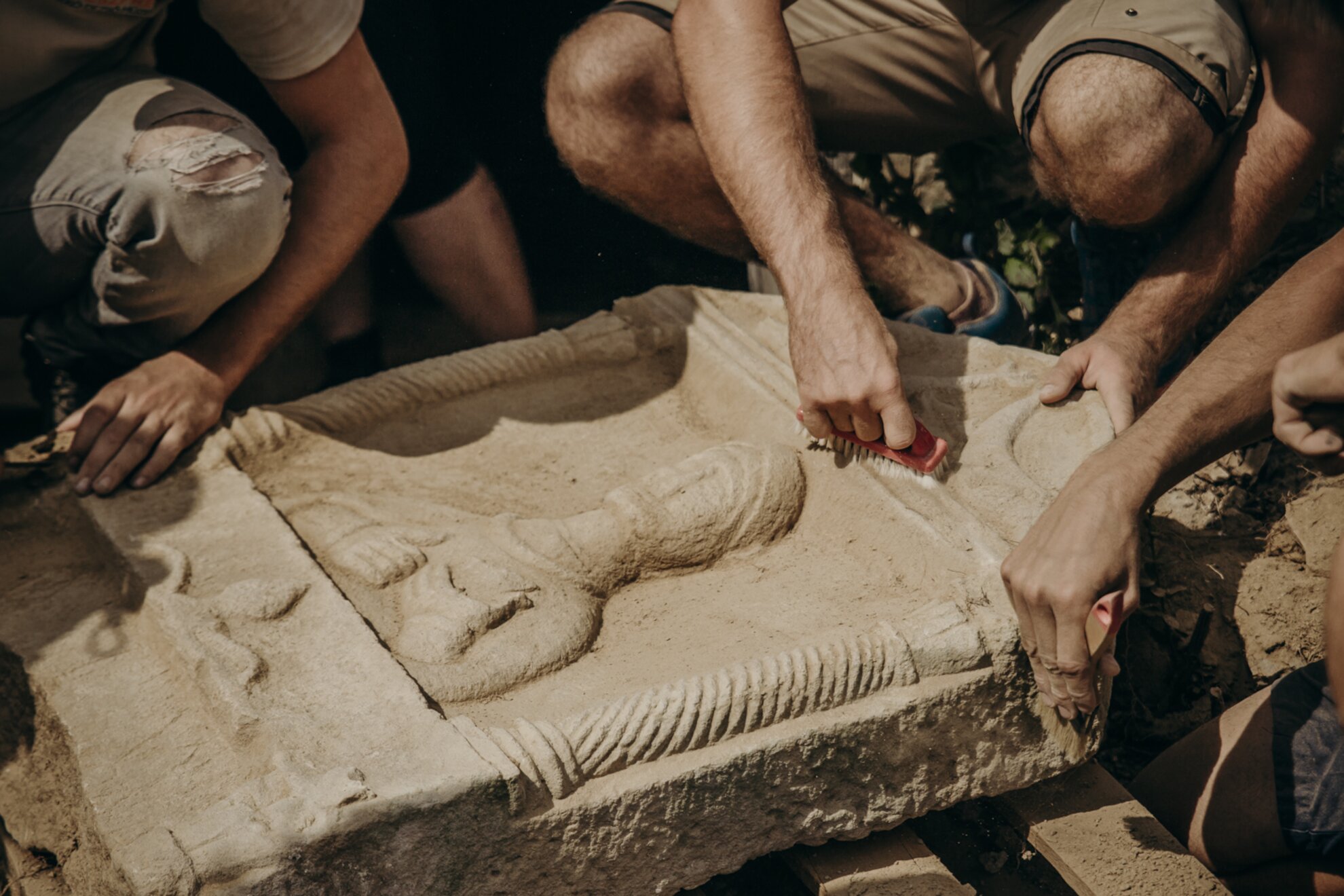
Győrffy-Villám reckoned it was exciting to unveil the stone before an audience. He wasn’t so happy about the carving, itself, however, as “its artistic design can’t be said to be outstanding,” and even said indicated that it’s likely they were dealing with a kind of Roman-era template for the production of others.
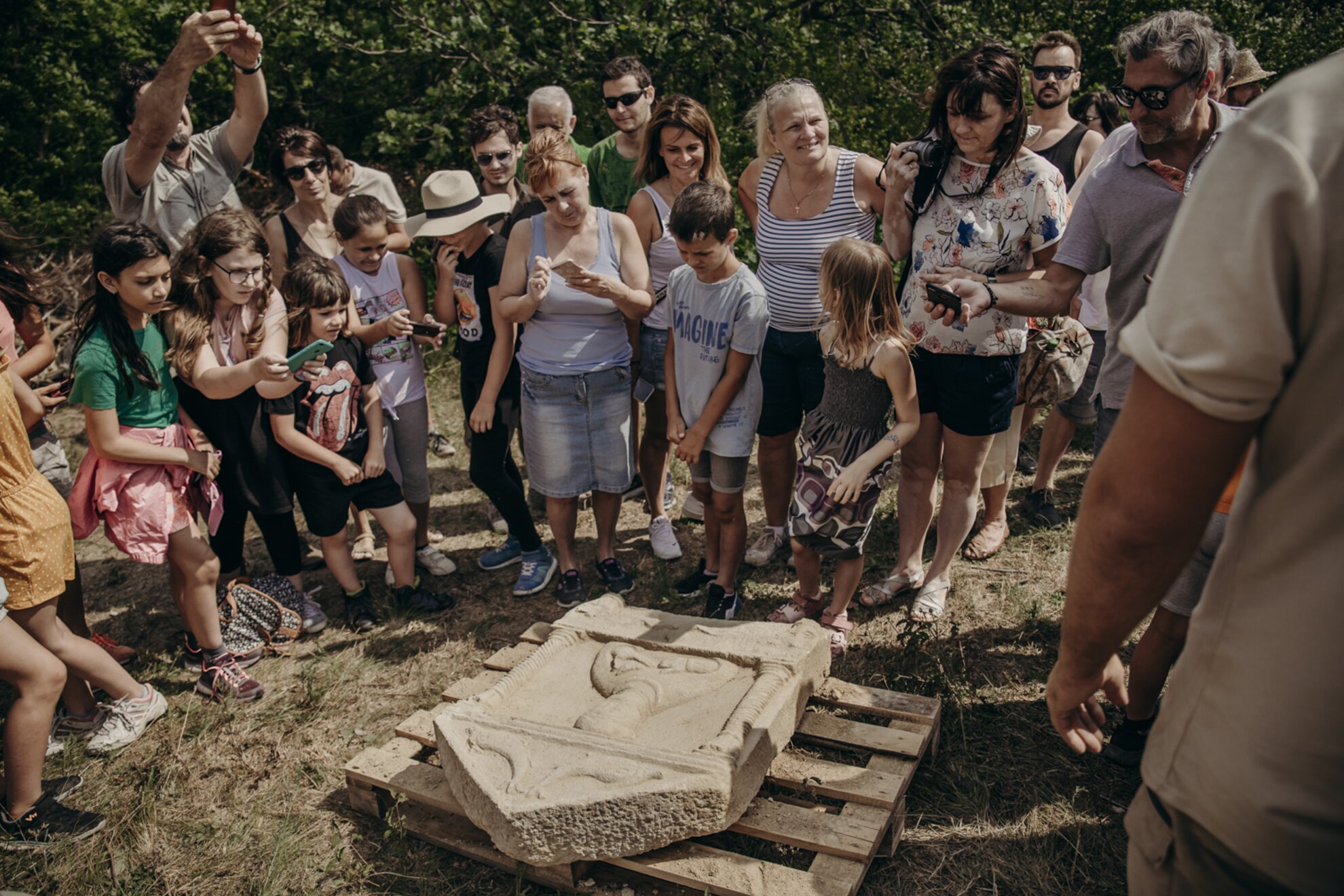
As for the lower half in the Balaton Museum, it turned out that back in the 1860s, it was part of the threshold of a church in Kékkút, stepped on by the faithful over many, many years – moreover, the ornate side was uppermost. For some reason, it was dug up from here and joined the collection of the Balaton Museum at an unknown date, perhaps the turn of the century of the 19th and 20th centuries.
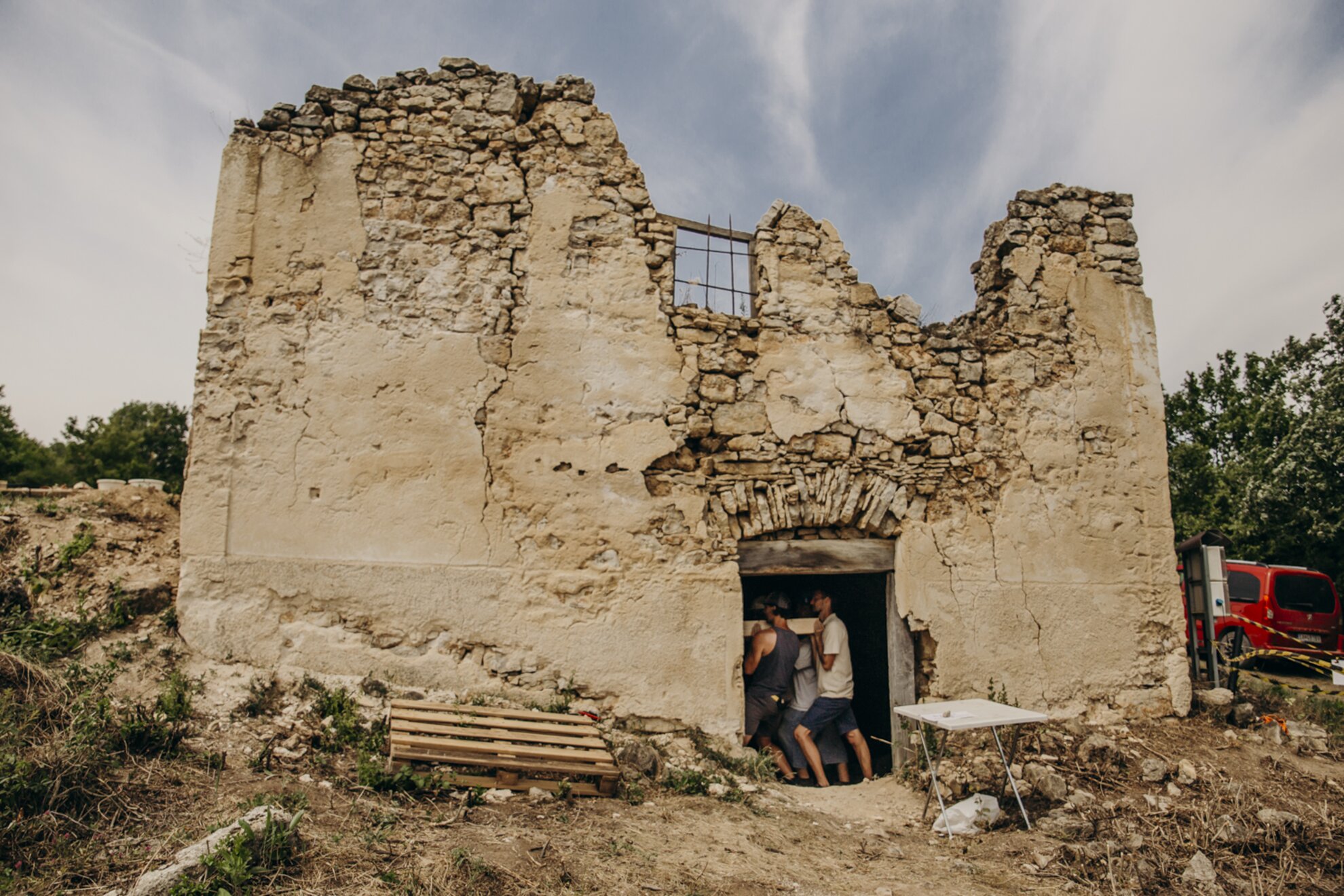
Retired archaeologist Sylvia Palágyi also gave a simple explanation as to why the two halves were found so far apart: Dörgicse and Kékkút were owned by the Piarists Order for a long time.
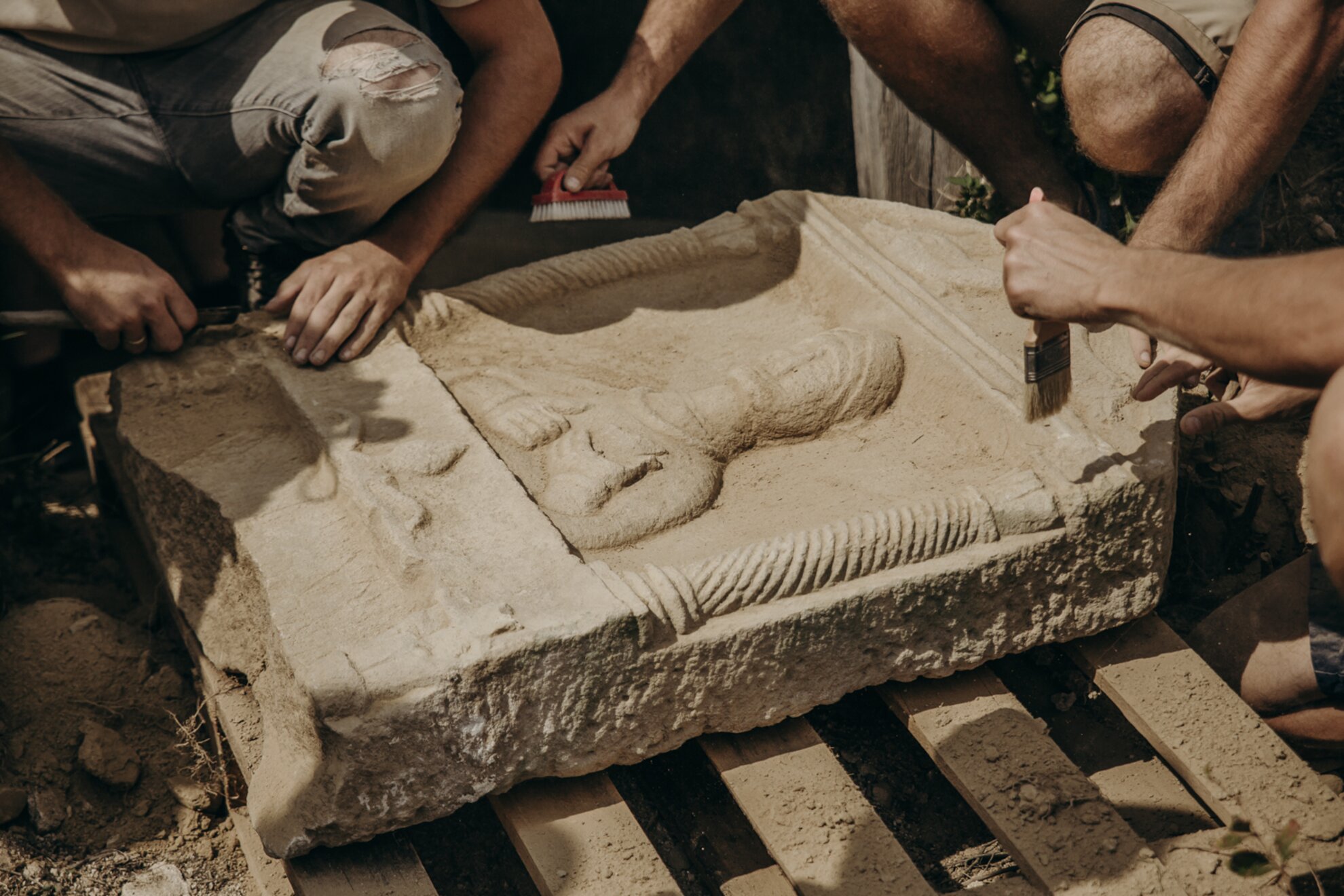
The tombstone dating back to the first 300 years after Christ, depicts a Celtic woman, the fourth of its kind to be found in the area after discoveries in Paloz, Lovas and Inota. The deceased is approximately 70-80 years old, not Romanized, as can be seen from her turban, necklace and bracelet.
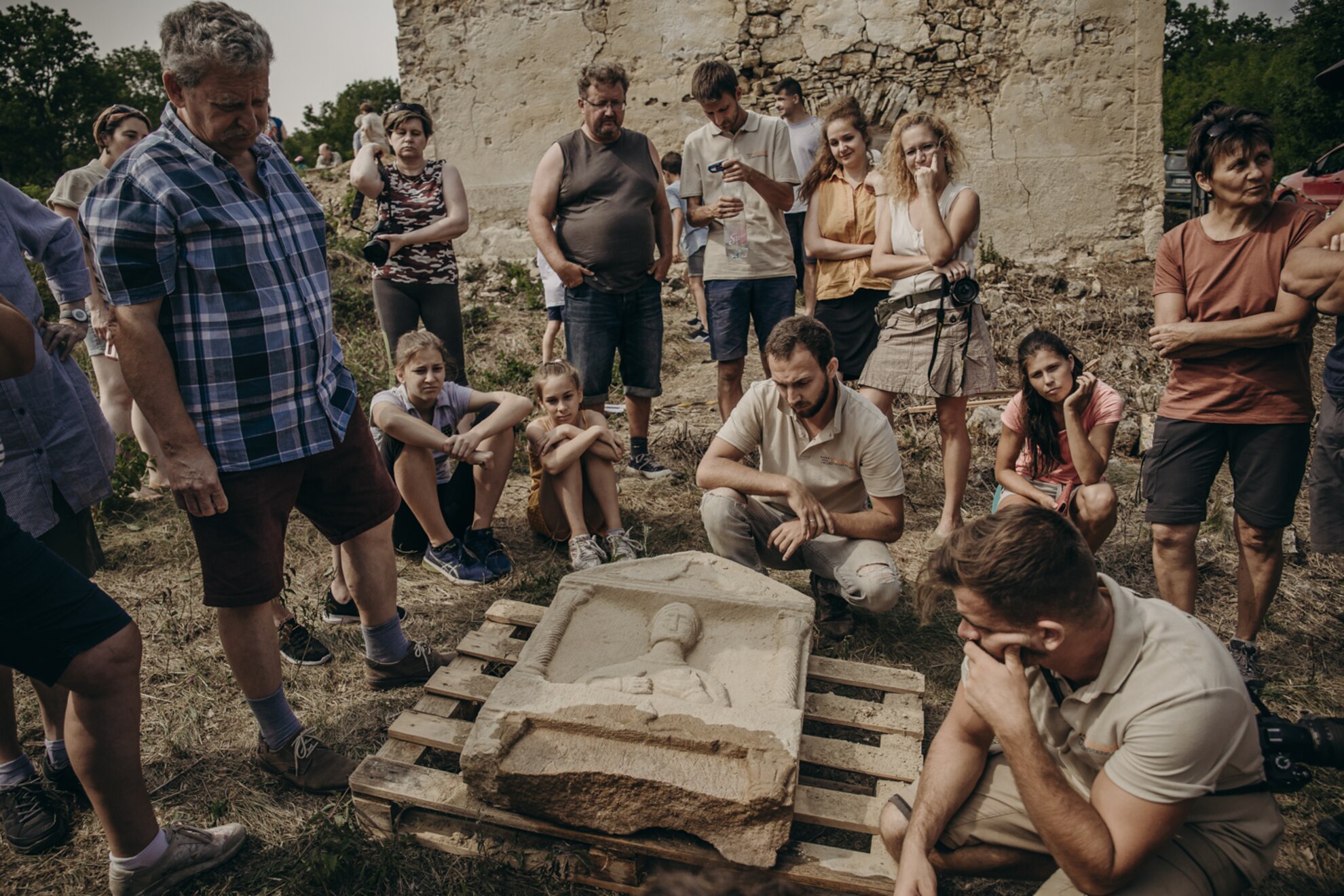
It is also interesting that the two halves are of slightly different material: the lower red sandstone, the upper ordinary sandstone. The raw material may come from the area of today’s Balatonalmádi, where it was a quarry in Roman times. The stonemason’s workshop was, according to researchers, in Dörgicse. There was also a quarry in Révfülöp, close to Kékkút, but the raw material did not come from there, which makes it probable that the bottom of the tombstone was later moved to Kékkút.
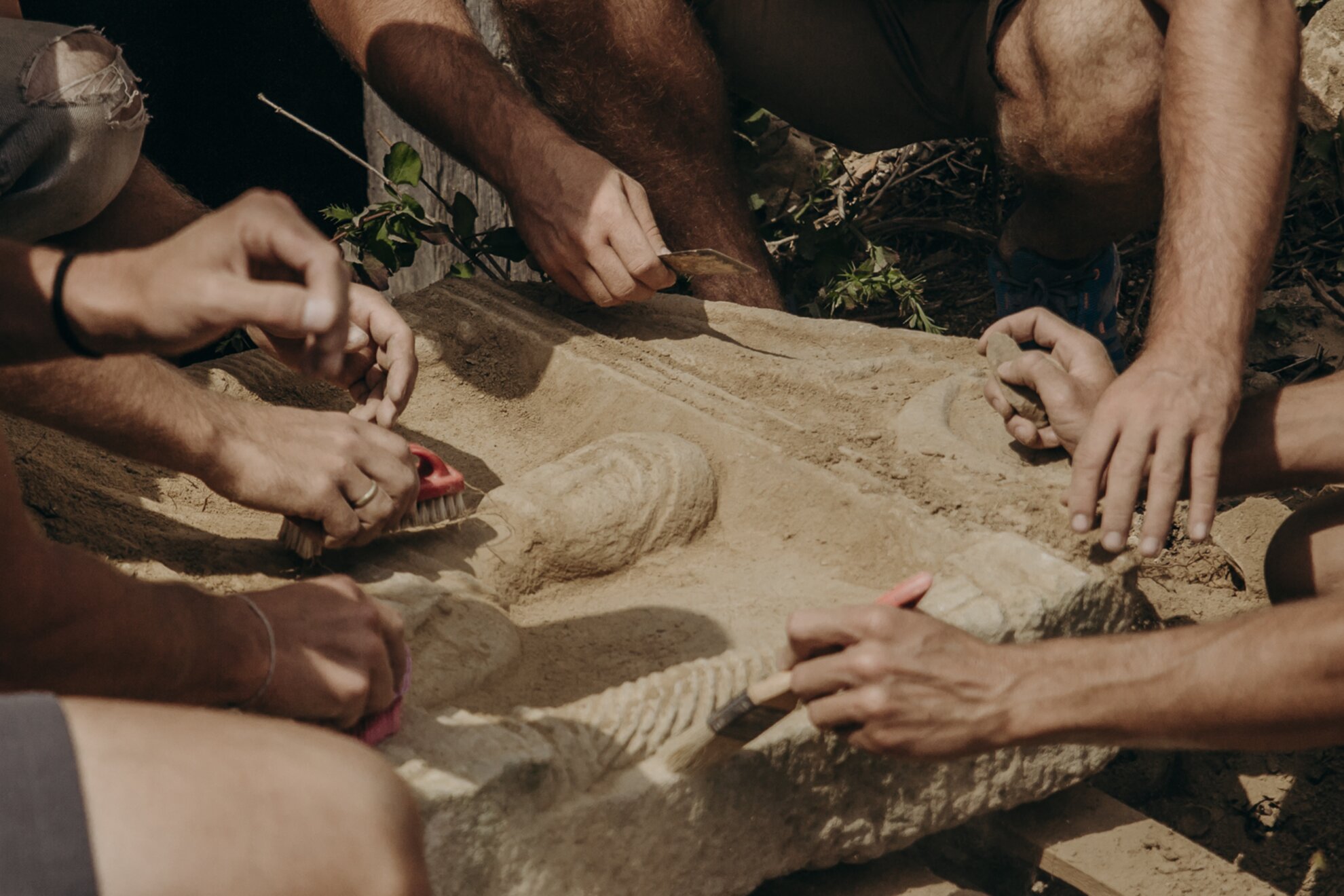
And so what next for our Celtic lady? Her lower half goes back to the winemakers’ exhibition of the Festetics Helikon Taverna in Vonyarcvashegy. The upper one will be placed in the closed space of the Aranysörte Winery in Dörgicse, which supported the excavation. In the long term, copies will also be made of the two stones so that each can sit alongside its other half.
